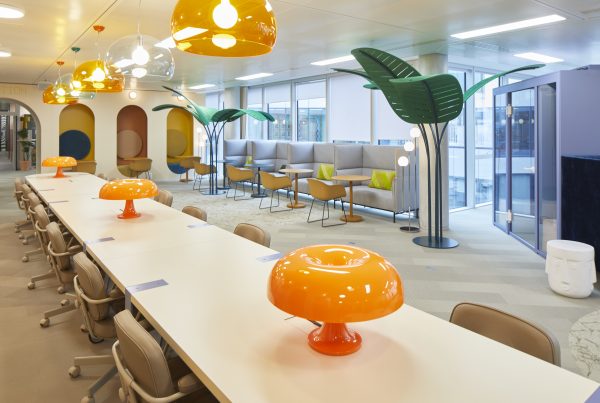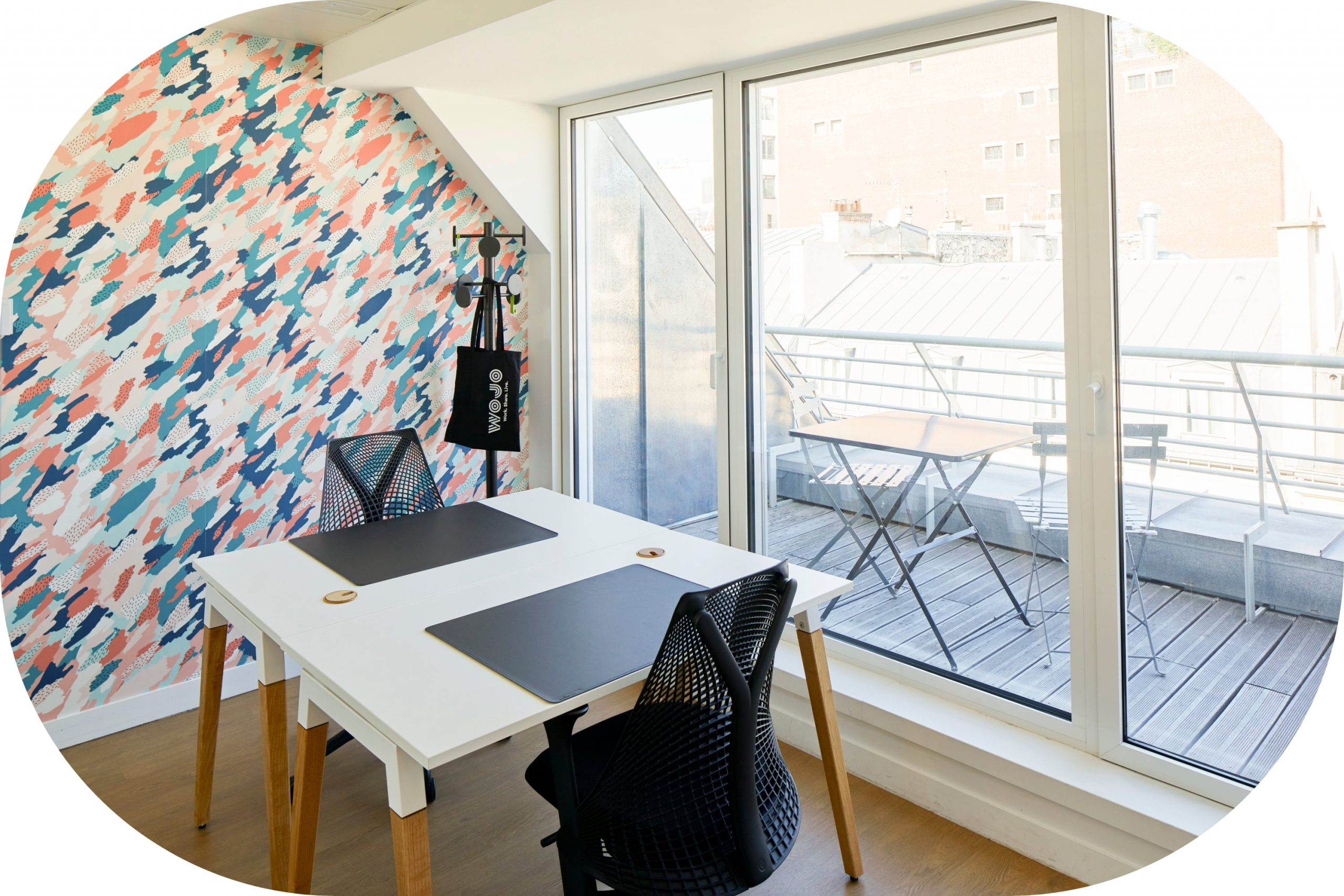The new organisation of work caused by the health crisis is forcing you to review the recruitment process, but also the geographical radius of your search. The generalization of teleworking invites companies to consider recruiting remotely employees who live far from the head office, by offering a mix of face-to-face and teleworking. In this new context, what are the best practices for recruiting and then onboarding your new talents remotely?
Towards the end of the five-day week in the office?
Will we really say ‘bye bye’ to being in the office five days a week once the health crisis is behind us? That’s what employees seem to be calling for, anyway. For companies, it is an opportunity to widen the geographical area of their recruitment, and to strengthen their employer brand by affirming an open, participative and trust-based management.
But recruiting and then integrating remote employees is not something you can improvise. Here are some good practices to put in place to get you started!
1 – Write your advertisement well and mention telework from the start
Good recruitment starts with a well-written advertisement. Including a precise job description, of course, the experience expected and the tasks proposed, as well as the salary range envisaged. Also mention your company’s teleworking policy: face-to-face/distance balance, subscriptions provided to your employees to access coworking spaces near their homes, collaborative tools used, etc. These arguments can be decisive for certain talents, put them forward!
Once your applications have been received, whether you are recruiting remotely or in person, the steps are the same. You sort your CVs, remembering to reply to those you do not retain, and keeping the most interesting ones in your database for future recruitment. You then contact by e-mail or telephone the candidates who seem suitable for the position in order to arrange an interview.
2 – Making a success of videoconference interviews
Whether the time of year imposes travel restrictions, or you are considering recruiting a talent who lives far from your company… organising interviews by video conference is preferable to the telephone. Video allows you to combine an important part of non-verbal communication with your exchange to get a general idea of your candidate’s personality.
There are many free programs such as Zoom, Skype or Google Meet that make it easy to hold a video conference from a computer or smartphone. Set up in a quiet, closed room, as you would for a physical interview. Log in a few minutes before the interview starts to welcome your candidate to the virtual room, and exchange numbers to call each other back in case of a break.
Not everyone is comfortable with video, even though its use has increased significantly in recent months. Ask a few ice breaker questions before starting the interview to put everyone at ease! For example, how is the current period of alternating face-to-face and distance learning going? Does the candidate have a place to work at home or nearby?
3 – Include telework in your question grid
In addition to the traditional questions to assess the candidate’s skills (actions taken in the past year to improve; interest in teamwork; reaction to a problem for which he/she does not have the solution; prioritisation of work emergencies; preferred method of contact with teams and managers, etc.), address the issue of teleworking.
Has the person ever done it? On their own or out of obligation? How did they experience it? Did they telework from home or in a shared workspace? Reassure the candidate that there is no trick question, you are trying to assess the best work organisation for their profile.
4 – Highlighting your offices
It cannot be stressed enough: the working environment is important in attracting talent. Nearly one in two employees (1) say that their working environment plays a central role in their motivation (43%) and efficiency (41%). Also according to the latest Wojo and Opinion Way study, more than 32% of employees would like to have more varied spaces (choice between private offices, lounges, open spaces) and more convivial spaces (bars, restaurants, outside).
At the end of your video interview, send your candidate photos or a video showing the atmosphere in your offices, the different areas available to the teams (open spaces, social areas, nap rooms, outside areas, etc.). This will help them to imagine their future working environment.
Read also: Office, my beautiful office, help me to work well today
5 – Play the collaborative card
Involve your team in your remote recruitment. Ask two people to interview your three favourite candidates and share their feelings about their team spirit, their motivation, their ability to integrate your company culture and to mingle with your dream team. For your existing employees, this is a rewarding request, and another way of reinforcing their sense of belonging with them at a time when social ties are so much needed.
Do not let them loose if they have never conducted a recruitment interview. Prepare a question grid together that can be used for future searches. And if you have several recruitments in progress, choose different pairs so as not to overload the agendas, and involve as many people as possible in the process.
6 – Start onboarding as soon as the promise to hire is signed
Have you found your special someone? Has she accepted your proposal? Well done. Now that your remote recruitment process is over, the remote integration of your new recruit begins. Make them feel expected by you and the rest of the team.
In the period leading up to his arrival, maintain regular contact under various pretexts. Send him/her information about the company health insurance scheme, ask for his/her bank details, etc. If your company offers its employees access to teleworking in coworking spaces, send them documentation on the subject so that your new talent can look for spaces near their home.
7 – Preparing an integration booklet
The objective of a successful induction is to get your new recruit up and running quickly, by helping him or her to become familiar with your environment, your values and your operations. Ideally, a single document (digital or paper onboarding booklet) should contain a complete set of documentation including:
– a history of the company;
– an overview of your professional tools;
– an organization chart with pictures;
– your teleworking charter;
– a charter of good practice.
And anything else that you think might be useful to understand your issues and values.
The time spent developing it will then be saved with each new recruitment and arrival of trainees. You can even circulate it internally to revitalise your company culture if necessary.
8 – Anticipate its arrival like D-Day
The week before your employee arrives, make sure that they have been given an e-mail address and telephone number. If they are starting 100% remotely, send them their work tools via a specialised carrier (not forgetting a warm welcome and some goodies from the company). Organise a check-in with your IT manager to make sure everything is working properly. Reminders in the diary will help you to remember.
Do the same thing as in person, but in video mode and with extra attention:
– Schedule a meeting with the newcomer at the beginning of the day to welcome him or her;
– Introduce him or her to a mentor who is not a member of the team but who will be the contact person to turn to in the event of a general question;
– Organise a schedule of one-to-one meetings with various employees during the week of his or her arrival. This will be an opportunity to get to know each other and to familiarise themselves with the important issues in the company.
9 – And don’t forget the conviviality!
Just because you are doing a remote onboarding, you should not forget the most important thing (or almost): the conviviality within the team.
In the first two weeks of your new talent’s life, plan a moment of relaxation together, at lunchtime or in an afterwork format, with a theme to break the ice. Ask each employee to choose an accessory that represents him or her and explain it to the rest of the group, organise a blind test, a Chinese portrait game… In short, be creative for this first informal exchange that will seal your new employee’s entry! Of course, this does not prevent you from organising a real moment of conviviality on the day when the team meets face-to-face for the first time!
Recruiting remotely and onboarding teleworkers is certainly a challenge, asking us to break with long-established habits. But it is also a great opportunity to show empathy, creativity and to demonstrate your ability to adapt. The new organisation of work, mixing face-to-face and remote work, opens up new ways of collaborating, of balancing professional and personal lives. It is an opportunity for companies to reinvent themselves by adapting the distribution of their offices and their relationships with talent to attract and retain them over the long term.







